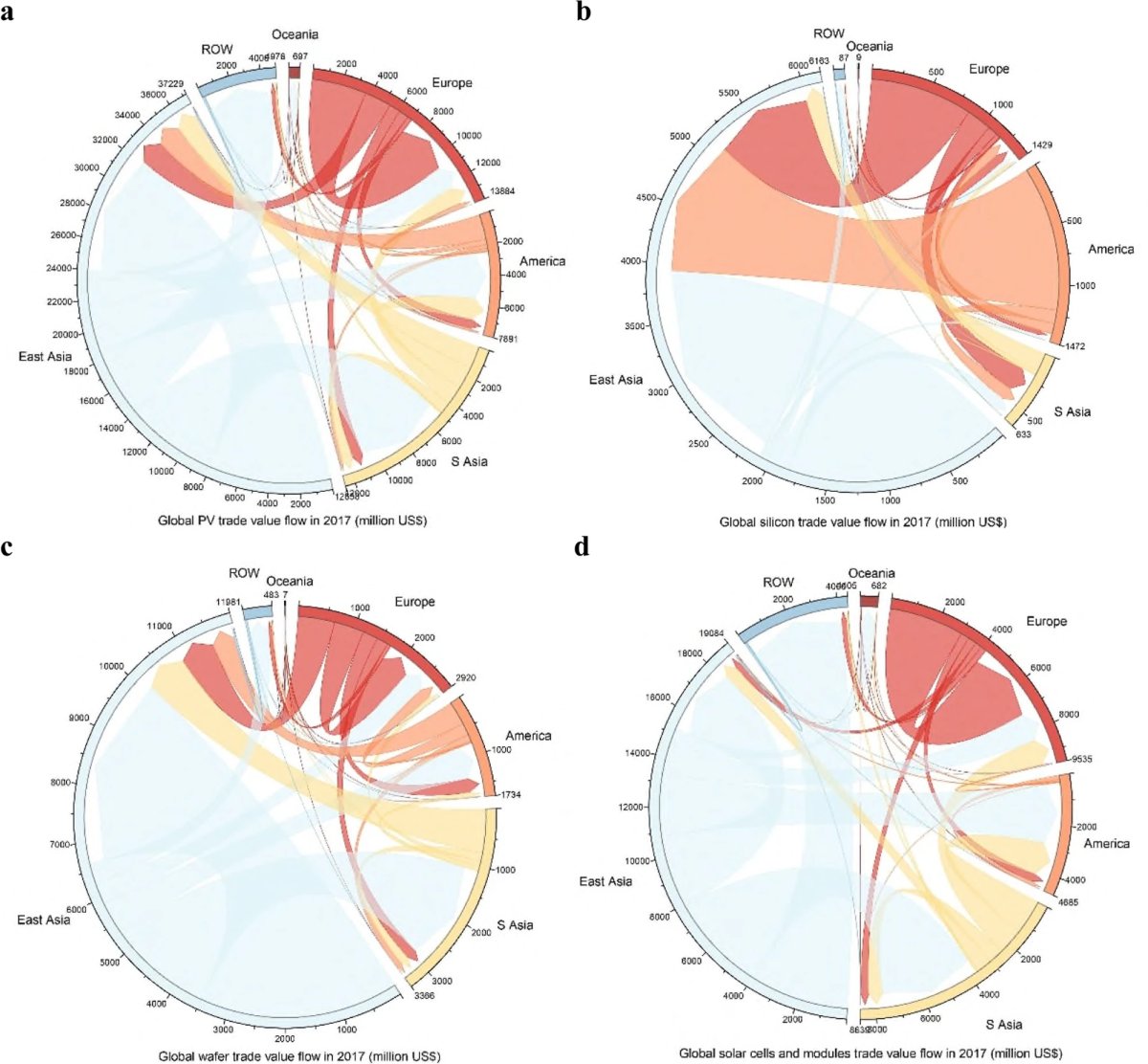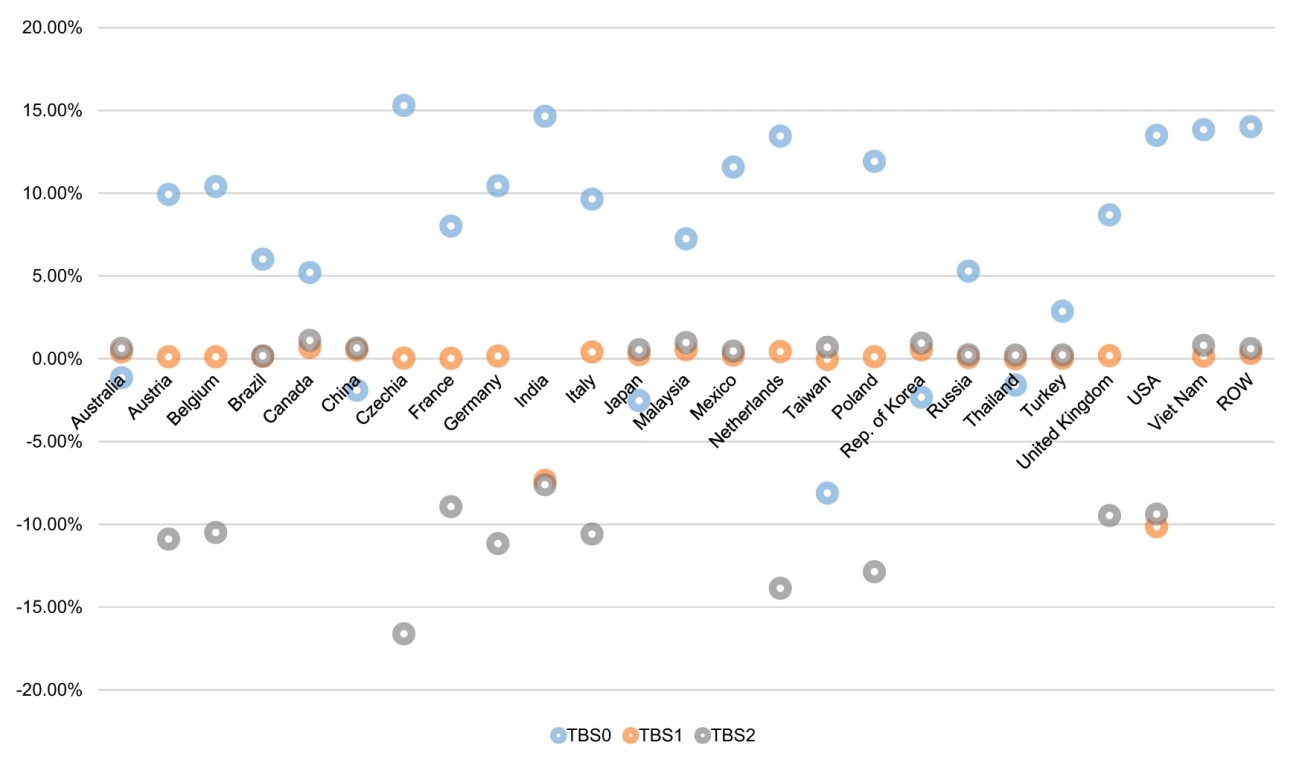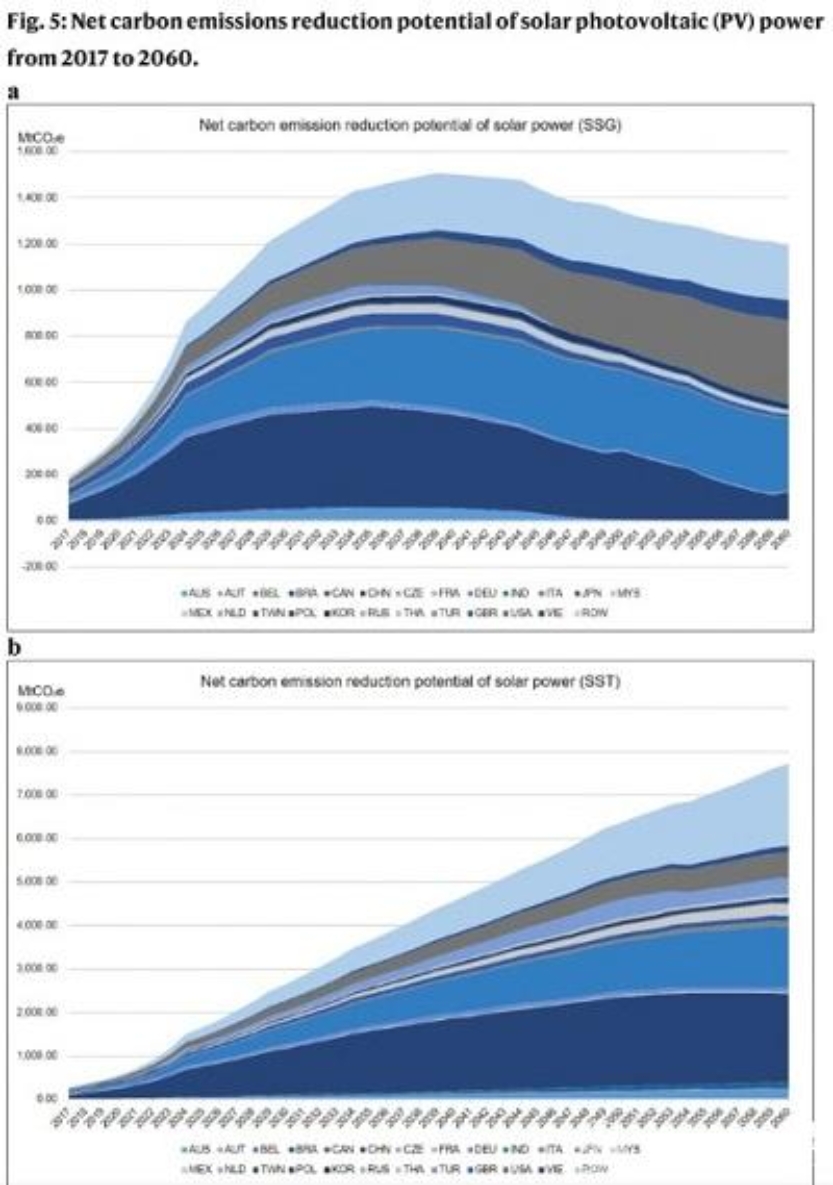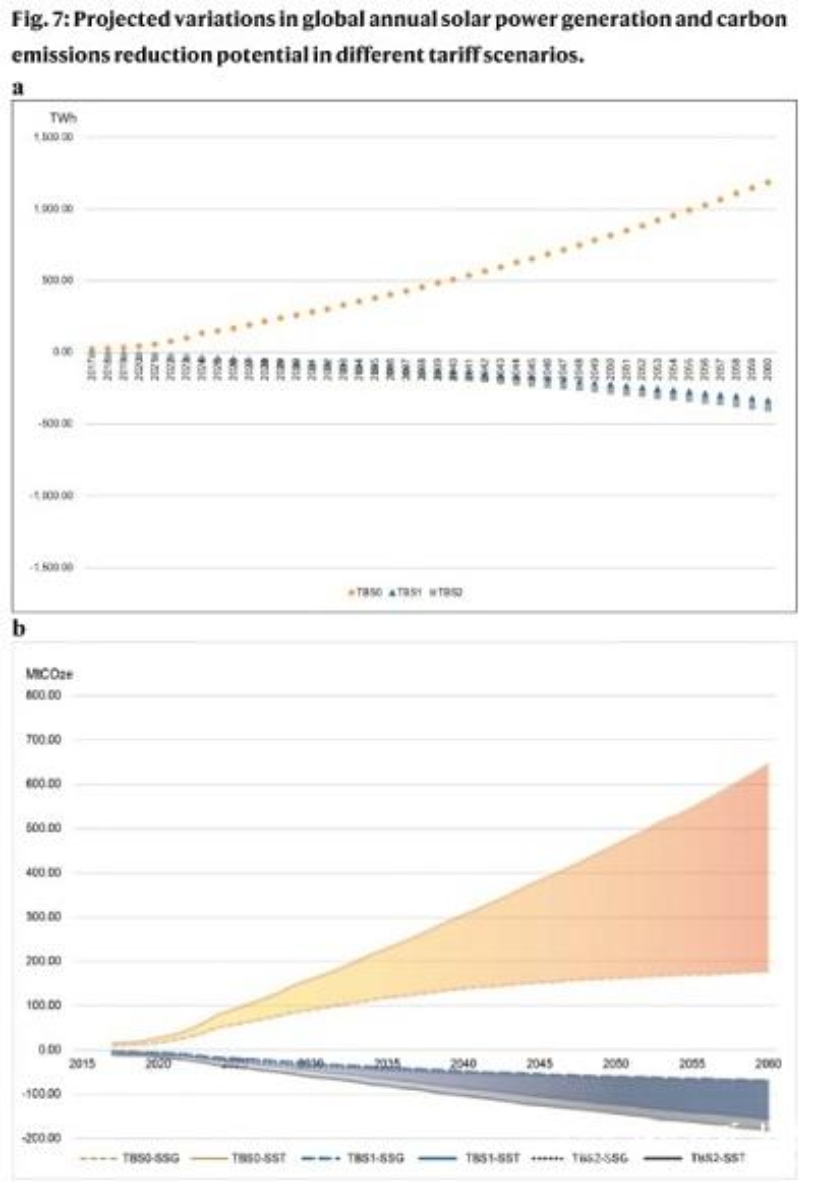Professor Mao Xianqiang's team from the School of Environment published an article in Nature Communications to reveal the importance of the liberalization of photovoltaic product trade for global carbon emissions reduction
On November 24, the team of Professor Mao Xianqiang from the School of Environment of Beijing Normal University published an online research paper titled "Breaking down barriers on PV trade will facilitate global carbon mitigation" in Nature Communications. The research results pointed out that the photovoltaic product trade has an important contribution to increasing the global installed capacity of solar photovoltaic power generation, photovoltaic power generation and promoting global greenhouse gas emission reduction.
In order to achieve the 1.5℃ temperature control target of the Paris Agreement, the proportion of renewable energy power needs to reach 59-97% in the middle of this century. Among them, photovoltaic power generation will play a key role in mitigating climate change and realizing low-carbon transformation. Over the past decade, the global application scale of photovoltaic power generation has continued to expand, the cumulative installed capacity has surged from 8 GW to 409 GW, and the proportion of power generation has increased from 0.04% to 1.72%. International trade plays a significant role in reducing the price and application cost of global photovoltaic products. However, with the expansion of the global photovoltaic market, trade protectionism continues to rise, and tariff and non-tariff trade barriers are common in the trade of photovoltaic products.
![]()



This research meticulously portrays the global photovoltaic product trade pattern, and simulates and analyzes the impact of current trade barriers on global photovoltaic trade and emission reduction potential. Research shows that photovoltaic power generation in the baseline scenario will achieve a net emission reduction of 50-180 GtCO2e from 2017 to 2060. Compared with the baseline scenario, if the current tariff barriers are removed by half, the global PV module production and application will increase by about 750 GW, and the global net carbon emission reduction potential will increase by about 4-12 gtco2e; If trade protection continues to increase, the two indicators will decrease by about 160-370 GW and 3-4 gtco2e respectively.
This study proposes that we should build a coordinated trade policy system, promote the reform of trade mechanism, strengthen regional and Global trade cooperation, and include photovoltaic products in the list of environmental products, so as to better realize the liberalization and facilitation of global photovoltaic product trade, and then release its environmental benefits.


Wang Mudan, a doctoral student from the School of Environment of Beijing Normal University, is the first author of the paper, and Professor Mao Xianqiang from the School of Environment of Beijing Normal University and Associate Professor Song Peng from the School of Public Administration of Chongqing University are the corresponding authors. This research was supported by the National Natural Science Foundation of China (Grant No.42071270) and the National Social Science Fund Key Project (Grant No.17AJY011).
Links to the paper: https://www.nature.com/articles/s41467-021-26547-7


